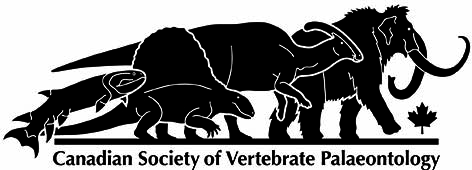A New Specimen of Xiphiorhynchus sp. cf. aegyptiacus (Istiophoriformes, Xiphioidei, Xiphiidae) and Billfish Diversity in the Oligocene of South Carolina
DOI:
https://doi.org/10.18435/vamp29367Keywords:
South Carolina, Chattian, Chandler Bridge Formation, Xiphiorhynchus, Xiphiidae, Xiphiorhynchus aegyptiacus, Billfish, Rostrum.Abstract
A partial billfish rostrum from the Chandler Bridge Formation (Early Chattian, Oligocene) near Ladson, South Carolina, U.S.A., is described and identified as Xiphiorhynchus sp. cf. aegyptiacus. The angle of taper, depth to width ratio of the cross section, and other morphological features (including dorsolateral grooves and a planoconvex cross-section), indicate that this specimen (and an earlier published speccimen) is closest in morphology to X. aegyptiacus from the Eocene Birket Qarun Formation of Egypt. This confirms the presence of a second xiphiid in the Chandler Bridge Formation besides the well-documented giant swordfish X. rotundus. This is an unusual example of two Xiphiorhynchus species existing in known sympatry, and strongly contrasting morphologies and morphometrics may point to niche partitioning between the two forms. The occurrence of specimens strongly resembling X. aegyptiacus in the western Atlantic also further substantiates past arguments that easy dispersal across the Atlantic was possible for this genus, and, by extension, that it shared the open-sea, migratory epipelagic lifestyle of modern swordfish. Moreover, the Chandler Bridge Formation boasts the most diverse billfish assemblage in the world, including Xiphiorhynchus sp., cf. X. aegyptiacus, X. rotundus, an early istiophorid, and 4-7 species of blochiid billfish in the genera Aglyptorhynchus and Cylindracanthus.
Downloads
References
van Beneden, P.J. van. 1871. Recherches sur quelques poissons fossiles de Belgique. Bulletin de l’Académie Royale des Sciences, des Lettres et des Beaux-Arts de Belgique 31:493-518.
Betancur-R, R., R.E. Broughton, E.O. Wiley, K. Carpenter, J.A. López, Chenhong Li, N.I. Holcroft, D. Arcila, M. Sanciangco, J.C. Cureton II, F. Zhang, T. Buser, M.A. Campbell, J.A Ballesteros, A. Roa-Varon, S. Willis, W. Borden, T. Rowley, P.C. Reneau, D.J. Hough,* G. Lu, T. Grande. 2013. "The tree of life and a new classification of bony fishes." PLoS currents 5.
Boessenecker, R.W. and J.H. Geisler. 2018. New records of the archaic dolphin Agorophius (Mammalia: Cetacea) from the upper Oligocene Chandler Bridge Formation of South Carolina, USA. PeerJ 6:e5290.
Boessenecker, R.W. and R.E. Fordyce. 2017. A new eomysticetid from the Oligocene Kokoamu Greensand of New Zealand and a review of the Eomysticetidae (Mammalia, Cetacea). Journal of Systematic Palaeontology 15:429-469.
Cicimurri, D.J. and Knight, J.L. 1997. Late Oligocene Sharks and Rays from the Chandler Bridge Formation, Dorchester County, South Carolina, USA. Acta Palaeontologica Polonica 54:627-647.
Cione, A.L., M.A. Reguero, D.H. Elliot. 2001. A Large Osteichthyan Vertebra from the Eocene of Antarctica. Neues Jahrbuch fur geologie und Palaontologie – Monatshefte 9: 543-552.
Cope, E.D. 1869. Descriptions of some extinct fishes previously unknown. Proceedings of the Boston Society of Natural History 12:310–317.
Cope, E.D. 1887. Geology and paleontology. American Naturalist 21:1014–1019.
Fierstine, H. L., and F. Pfeil. 2009. Xiphiorhynchus haeringensis, a new genus and species of billfish (Perciformes, Xiphioidei, Xiphiidae, Xiphiorhynchinae) from Bad Haring, Tyrol, Austria, lower Oligocene (NP 22). Palaeo Ichthyologica 11:5-42.
Fierstine, H. L., and S. P. Applegate. 1968. Billfish remains from southern California with remarks on the importance of the predentary bone. Bulletin of the Southern California Academy of Sciences 67:29–39.
Fierstine, H.L., 2006, Fossil History of Billfishes (Xiphioidei). Bulletin of Marine Science 79:433–453.
Fierstine, H.L., and J. E. Starnes. 2005. Xiphiorhynchus cf. X. eocaenicus (Woodward, 1901), (Scombroidei: Xiphiidae: Xiphiorhynchinae) from the Middle Eocene of Mississippi, the first transatlantic distribution of a species of Xiphiorhynchus. Journal of Vertebrate Paleontology 25:280–287.
Fierstine, H.L., and N.L. Voigt. 1996. Use of Rostral Characters for Identifying Adult Billfishes (Teleostei: Perciformes: Istiophoridae and Xiphiidae). Copeia 1:148–161.
Fierstine, H.L., and P.D. Gingerich. 2010. A second and more complete rostrum of Xiphiorhynchus aegyptiacus Weiler, 1929, (Perciformes: Xiphioidei: Xiphiidae: Xiphiorhynchinae), from the Birket Qarun Formation, Upper Eocene, Egypt. Journal of Vertebrate Paleontology 29:589–593.
Fierstine, H.L., and R.E. Weems. 2009. Paleontology of the Oligocene Ashley and Chandler Bridge Formations of South Carolina, 4: Analysis and New Records of Billfishes (Perciformes: Xiphioidei). Palaeo Ichthyologica 11:43–88.
Friedman, M., H.T. Beckett, R.A. Close, & Z. Johanson. 2016. The English chalk and London clay: Two remarkable British bony fish Lagerstätten. Geological Society, London, Special Publications 430:165-200.
Katuna, M.P., J.H. Geisler, and D.J. Colquhoun. 1997. Stratigraphic correlation of Oligocene marginal marine and fluvial deposits across the middle and lower coastal plain, South Carolina. Sedimentary Geology 108:181–194.
Leriche, M. 1909. Note preliminaire sur des poissons nouveaux de l’Oligocene Belge. Bulletin de la Société Belge de Géologie, de Paléontologie et d'Hydrologie, Procés-Verbaux 22:378–384.
Muizon, C. de, T.J. Devries. 1985. Geology and paleontology of late Cenozoic marine deposits in the Sacaco area (Peru). Geologische Rundschau 74:547-567.
Regan, C. T. 1909. On the anatomy and classification of the scombroid fishes. Annals and Magazine of Natural History 8:66-75.
Sanders, A. E. 1980. Excavation of Oligocene marine fossil beds near Charleston, South Carolina. National Geographic Society Research Reports 12:601-621.
Swainson, W. 1839. The Natural History of Fishes, Amphibians, and Reptiles or Monocardian Animals II: London, Longman, Orme, Green and Longmans & John Taylor.
van Beneden, P. J. 1871. Recherches sur quelques poissons fossiles de Belgique. Bulletin de l’Académie Royale des Sciences, des Lettres et des Beaux-Arts de Belgique 31:493-518.
Weems, R.E. and E.M. Lemon. 1984. Map of the Stallsville quadrangle, Dorchester and Charleston counties, South Carolina. U.S. Geological Survey Quadrangle Map Q-1581.
Weems, R.E., L.M. Bybell, L.E. Edwards, W.C. Lewis, and J.M. Self-Trail. 2016. Stratigraphic revision of the Cooper Group and the Chandler Bridge and Edisto Formations in the Coastal Plain of South Carolina. South Carolina Geology 29:1-24.
Weems, R.E., W.C. Lewis, and E.M. Lemon, Jr. 2014. Surficial geologic map of the Charleston region, Berkeley, Charleston, Colleton, Dorchester, and Georgetown Counties, South Carolina. U.S. Geological Survey Open File Report 2013-1030. U.S. Geological Survey Geologic Quadrangle Map GQ-1581.
Weiler, W. 1943. Ein schwertfisch-Rostrum aus dem mitteloligozän Ungarns. Zeitschrift der Deutschen Geologischen Gesellschaft 95:214–217.
Woodward, A. S. 1901. Catalogue of the fossil fishes in the British museum (Natural History) Volume 4, London, Order of the Trustees.
Downloads
Published
How to Cite
Issue
Section
License
Copyright (c) 2020 William McCuen, Aika Ishimori, Robert Boessenecker

This work is licensed under a Creative Commons Attribution 4.0 International License.
Submission of an article to Vertebrate Anatomy Morphology Palaeontology will be taken to mean that the article is an original work and not previously published or under consideration for publication elsewhere.
If the article is accepted for publication, it will be published on-line under Creative Commons Attribution 4.0 International (CC By 4.0) meaning:
Attribution — You must give appropriate credit, provide a link to the license, and indicate if changes were made. You may do so in any reasonable manner, but not in any way that suggests the licensor endorses you or your use.
No additional restrictions — You may not apply legal terms or technological measures that legally restrict others from doing anything the license permits.







